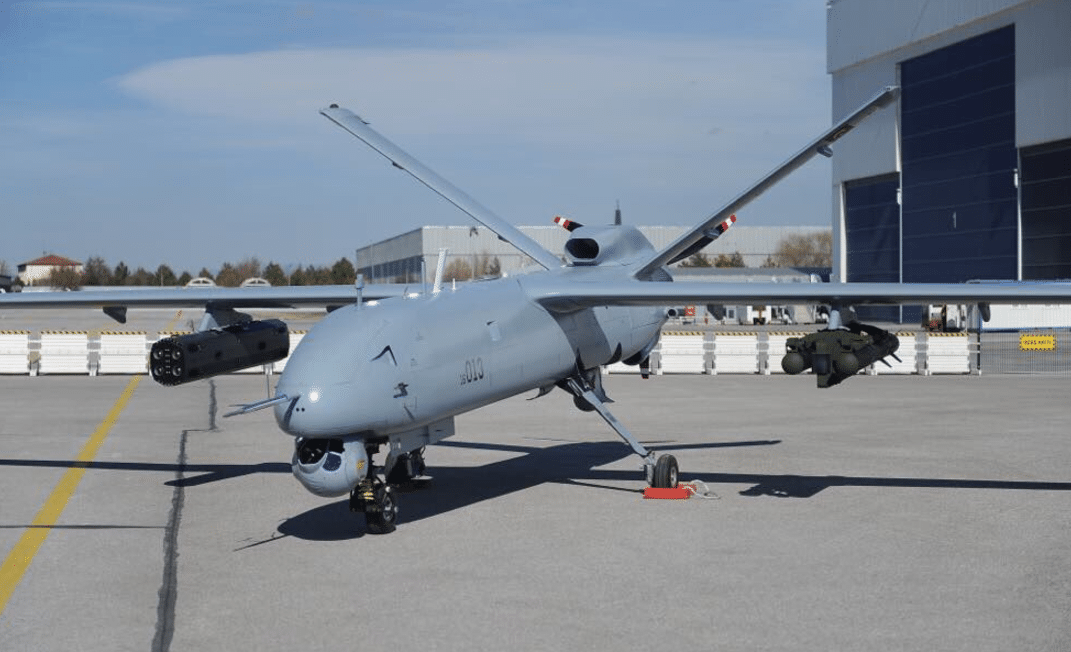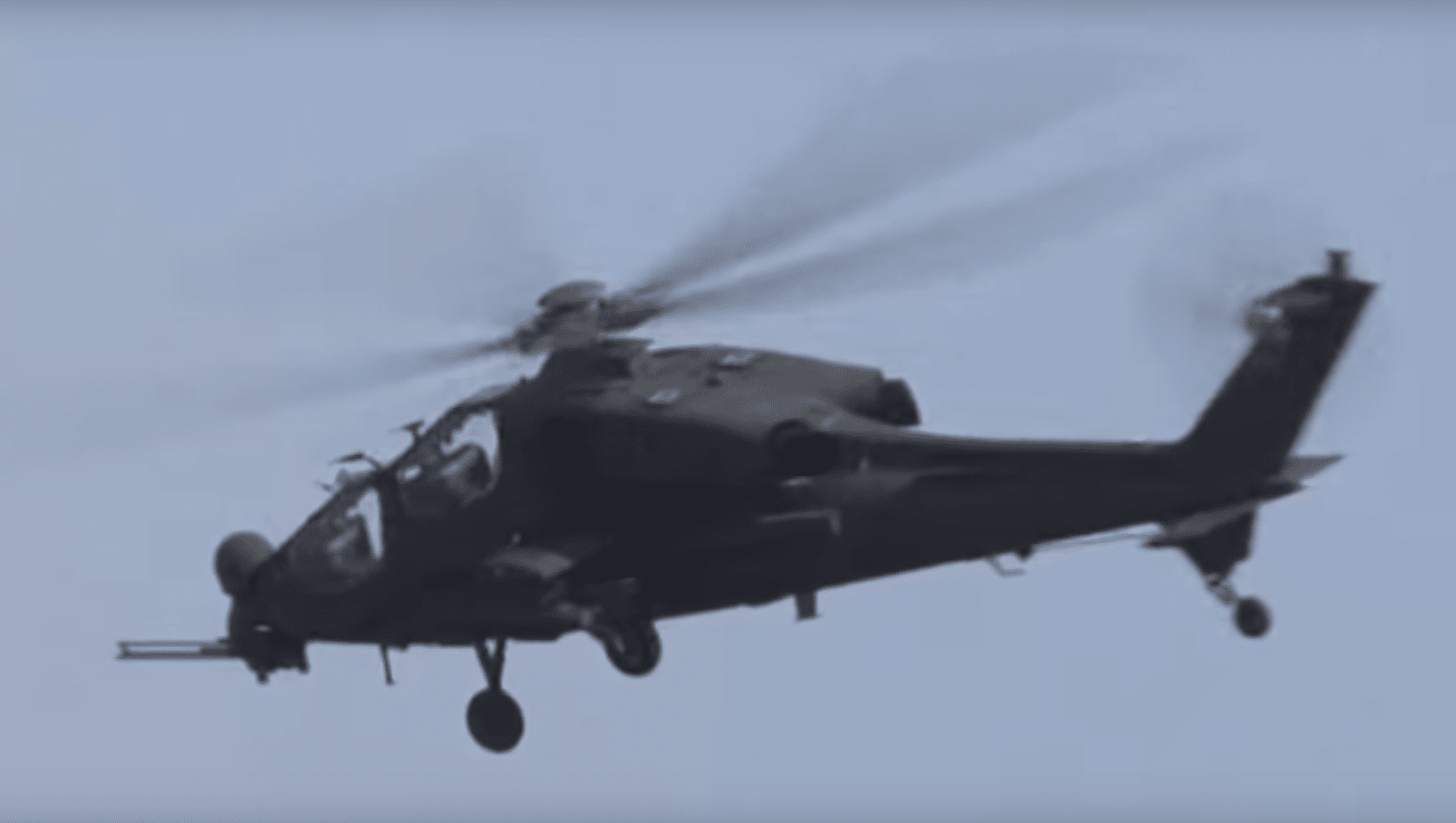2186Views 24Comments

Turkey completes development of engine for Anka UAV
The Turkish defence news publication C4Defence reports that Tusaş Engine Industries (TEI) has reportedly completed development of its PD170 turboprop engine meant for the Turkish Aerospace Industries (TAI) Anka medium-altitude long-endurance (MALE) unmanned aerial vehicle (UAV).
The Turkish Undersecretariat of Defence Industries (SSM) commissioned TEI to develop the PD170 in 2012 as part of the Turkish government’s drive to indigenize the supply of defence hardware.
The PD170 has a top speed of 170 hp (at up to 20,000 ft) and weight of 170 kg. It will provide the Anka UAV a flight ceiling of 40,000 ft. With development complete, TEI will proceed to supply the PD170 to TAI for integration and testing with the Anka UAV. Engine and civil certification will be complete in 2018.
As per C4Defence, the PD170 is 5 kg heavier than the Anka’s current powerplant, but it will improve the Anka’s power-to-weight ratio thanks to its higher power output than the existing engine.
The TAI Anka had its maiden test flight in 2010. In 2013, the Turkish government awarded TAI a contract to supply 10 Anka-A UAVs to the Turkish Armed Forces (TSK). In April 2017, TAI successfully weaponized the Anka with the Roketsan MAM-L and CİRİT. In July, the Anka was deployed in combat.
The TSK will also begin receiving the satellite communication (SATCOM)-capable Anka-S. The TSK will be able to operate the Anka-S at beyond line-of-sight (BLOS) range.
Notes & Comments:
The availability of the PD170 provides Turkey with a complete turnkey base for producing the Anka UAV, which already benefits from the domestic supply of electronics – including electro-optical and infrared (EO/IR) sensors – and guided air-to-surface munitions. The PD170 will also place Turkey in the position to offer the Anka for export, which could be an opportunity in Middle East and Central Asian markets, which have largely been dominated by the Chinese (in armed drone sales).



24 Comments
by Faisal
so we are possibly looking at sky being filled with these drones 10-15 years down the road with jet fighters only coming into the action when needed?
by Joseph
I think that day is already here according to this article: https://www.voanews.com/a/military-drones-flood-war-skies-over-syria-and-iraq/3330150.html
According to the article:”drone traffic has become so heavy that military commanders report difficulty in distinguishing IS drones from Kurdish and coalition drones.”
Turkey has already used US made drones during these conflicts and I guess Turks realized just how useful they were.
by Chauqat Ali Khan
This is great news for Project Azm.Pakistan can use these and chinese engines as options.It is great to see more options for Pakistan and i believe it is time to fill the gap with local produce.
by otto
TEI PD170 engine also will be avaliable for TAI’s new dual-engine UAV..
https://www.tai.com.tr/tr/proje/yuksek-faydali-yuk-kapasiteli-yfyk-insansiz-hava-araci
https://uploads.disquscdn.com/images/d9d26b92a40bda2e0d8c85b7b8204c63877b5c9e4dc9d75906f325c43fd20aba.jpg https://uploads.disquscdn.com/images/e17f81fd1c32adc0534e6086f47b51dea396b157470f15906de59da801b34bb0.jpg https://uploads.disquscdn.com/images/93d40b751183bbc964660101143bc381705e0ed06b8741e798ef94caaafeb679.jpg https://uploads.disquscdn.com/images/f98f1798a026bb1fb33498b254230edde7887626c20428d62c6b9202b2863470.jpg
by Sinan Cagrı Kurt
Actually, Turkey used Anka UAV and Baykar Tb2 UAV Not US drones in Syria. This project is about changing problematic Thielert engine of Anka.
by ahmria
Yes I think the whole reason for Turkish UAV programme and development was the denial of sale to Turkey of UAVs especially armed variants like predator and reaper models by the Americans.
by ahmria
I think the Turks also wanted complete control of all intellectual property pertaining to UAVs and their systems especially engines.
by Joseph
PD170 is a turboprop engine, which is just about the simplest aviation engine there is (ww2 level technology).
Modern jet fighters use turbofan engines (jet engines), which is probably the most difficult thing on earth to make. Only a handful of countries capable of making it, that is:US, UK, France, Russia, China and Japan. Eurojet is a European consortium also capable of making turbofan jet engines. That is about it. India has been trying, so maybe in few decades India could start making jet engines as well.
Only US, UK, Russia and China (barely) made high thrust jet engines (JF-17 uses medium thrust engine, 9 ton class), Japan so far only makes low thrust jet engines (1 ~ 5 ton class).
China only recently can produce somewhat reliable high thrust engines, but it is still far behind from US. Pratt & Whitney F135, which is the engine of F-35, can produce 19 ton thrust (thrust-to-weight ratio of 11.46), Chinese WS-10 can only produce 13~14 ton thrust (thrust-to-weight ratio of 7.8).
China is working on a new high thrust turbofan engine WS-15 (for J-20), which is supposed to be able to produce up to 18 ton thrust and a thrust-to-weight ratio of 9 (still below American engines). According to various online sources WS-15 is undergoing final testing, estimated about 3 ~ 7 years away from completion. But let’s wait until it is completed to be sure it would work at all.
Japan is also working on a high thrust engine called XF9-1, which could produce around 15 ton thrust upon completion, but it is still in engine core testing phase, that means it is still about 15 ~ 20 years away from completion (engine development is a horribly long process). But once it is completed Japan will become one of the few countries that can produce the most advanced jet engines.
Both WS-15 and XF9-1 are supposed to have 3D thrust vectoring.
China is also developing a new medium thrust engine called WS-19 for FC-31 with 3D thrust vectoring and thrust-to-weight ratio of 9, but it is unclear of it’s progress.
I think China is still somewhat behind on thrust vectoring and that is why they bought Su-35, to gain access to the 117S engine’s 3D thrust vectoring technology. Russia for the moment is the only country mastered 3D thrust vectoring.
We all know India has been working on Kaveri turbofan engine for over 3 decades and it is still not working. According to wikipedia in November 2014, DRDO decided to abandon the Kaveri engine (GTX-35VS ) program. In 2016 they hired French company Snecma to help figuring out what is wrong with Kaveri, it is unclear what will happen next.
That is how hard it is to produce a turbofan jet engine. It is a long and painful process that requires huge amount of investments (I heard China invested about 300 billion dollars in this and that is just a start). I am not sure Turkey would even try.
by TZK
Something like this can be easily picked up by radar and shot down. UAV’s have been very successful in uncontested airspace but they will need stealth or radar jamming to avoid being detected and shot down in a contested air space.
by Mammoth
just respect the hard work..
by ali amanat
Brother its true, but very sad that muslim countries are fighting a technological war but individually and they will remain dependent till they are not joining hands and start working , R&D with each other like Turkey, Iran,Malasia,Indonesia and Pakistan and share their knowledge with each others in the respective fields .
by Mohammed
Engine thrust is measured in kN
by sam
well that is true, it is difficult but not impossible
turkey recently launched a join venture with BAE systems to develop engine for TF-X program.
so better to learn from those who have the knowledge instead of starting from scratch
by Kingfish
You do realize a turboprop is nothing more than a turbojet with a gearbox to turn a propeller, right? There were no turboprops in WW2.
by Joseph
Think this way. China can produce reliable turboprop engines since 1970s but could not make reliable turbofan engines until today. Do you still think they are the same? How long did it take for Turkey to develop a turboprop engine from start to finish?
by Joseph
I guess Turkey at least is thinking about developing turbofan engines, it is a good start to gain experience, though still a long way to go from designing an engine from scratch.
India had similar technology transfers and produced American F404 and Russian AL-31F domestically, but developing turbofan engines independently is still proven difficult.
But I think for Turkey it is a step in the right direction.
by Joseph
Yeah, but I am not an aerospace engineer, kN for me is difficult to comprehend, ton is far easier for me to understand.
by Joseph
Chinese made turboprop engines have been used on Chinese regional airliners. That is why I believe they have to be reliable.
It is the same reason why I think China now can produce reliable turbofan engines, because China is developing a turbofan engine CJ1000 for their commercial jet C919: http://en.people.cn/n3/2017/0911/c90000-9267207.html
by Kingfish
China’s engines have historically been copies of Russian designs. I have no data on reliability, but they’re considered inferior to western engines. Which is why Xian’s MA60/MA600 t-props have been powered by Pratt Canada PW127s since day one. AVIC just contracted with Pratt this year for engines for its MA700. Their Y-12F is powered by Pratt PT6As. Chinese engine technology isn’t up to par with western designs, which is why AVIC and France’s Snecma teamed up to develop t-prop technology 2 years ago.
by Kingfish
China has emphasized turbine technology development for years now, and are trying to expand their expertise in engine design. The C919 was first offered with CFM’s LEAP-1C engine while the CJ1000 was being developed. Not sure how many 919 buyers opted for the Chines engine but I’d bet more chose the CFM.
by Joseph
CJ1000 is most likely being used only by Chinese airlines at least initially, I read somewhere it’s fuel efficiency is still about 5% below LEAP engines, so it is probably cheaper or some kind of government subsidy would be provided for domestic purchase, it is unlikely to be exported at least in the beginning. Maybe after 5 years in service and some level of safety and maintenance statistics are there to provide market confidence.
After all it is unlikely for China’s first try to beat decade’s western engine experience. At least that would be the initial market perception.
But the fact CJ1000 is there at all is saying something about reliability of Chinese turbofan engines. They won’t even attempt such a thing if they don’t have that confidence.
by Joseph
I think that is why China start producing commercial turbofan engines, to develop the entire ecosystem of industry infrastructures. Various state owned and private enterprise’s desire for profit will drive developments better than pure government efforts.
by Joseph
Saying Chinese engines are not as good as western engines is stating the obvious, but the fact you have to say it at all means they are catching up.
Now it seems the inferiority is more about marginal differences in terms of something like fuel economy and service hours, at least for the commercial engines.
by Kingfish
I was an aero turbine analyst in my last job, so I’m not up to speed on programs as I used to be. I think the C919 is being bought primarily by China’s domestic carriers, similar to COMAC’s ARJ21. I don’t know of any other applications for the CJ; the engine would have to prove itself in service and even then new applications are hard to come by. Maybe on a military airlifter. Eventually China will catch up; their JV with Snecma will benefit their engine core design capability.